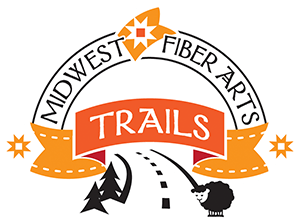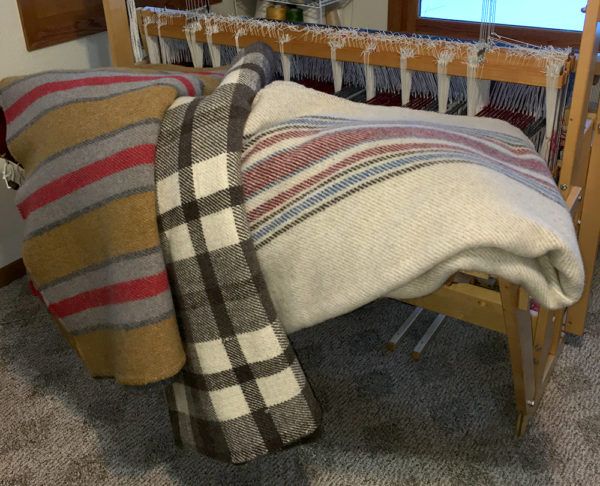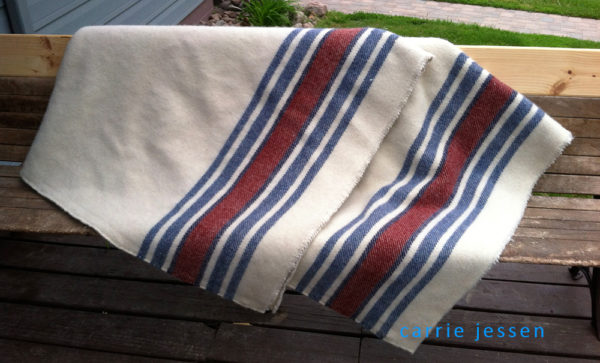Carrie Jessen’s weaving takes a historical approach.
Inspired by weave structures from Colonial times and interested in historic fur trading routes that were spread across northern Minnesota, Carrie weaves bed-sized blankets with the traditional striping and color motifs commonly found in the 1700-1800’s. Think big, warm and similar to a Hudson’s Bay blanket. She and her husband enjoy fur trader re-enactments, so she says much of her weaving reflects that time period and what was available to the fur traders.
Wool is the foundation of Carrie’s weaving. It’s array of color and texture offer infinite possibilities but yet it’s a challenge to stay within Colonial era options. She feels a beautiful project is successful when it’s warm, comforting, and utilitarian. Carrie shares her thoughts about her weaving with us:
A little bit of background…
- When did you first become interested in fiber art? My mother taught me how to do the running stitch with a dull needle when I was about 5 years old; it was so fun. I think she was trying to keep me out of her way! My aunt taught me basic embroidery stitches on a pillow case when I was about 9. I wouldn’t leave her alone, and I still have the pillow case. My 7th grade “home ec” teacher really got me hooked on fabric, yarn, and thread. I got away with working on my knitted sweater during my 7th grade biology class!
- What about the medium of fiber appeals to you? Color, texture, the infinite possibilities, and using the article in everyday life. I love making something that is beautiful and warm, comforting, and utilitarian.
- What type(s) of fiber (medium) do you work with the most? Wool, cotton, and linen yarn suited for weaving.
- What theme or ideas are recurring in your work? Traditional or colonial weave structures that were often used during the 18th and 19th centuries in the United States and Canada.
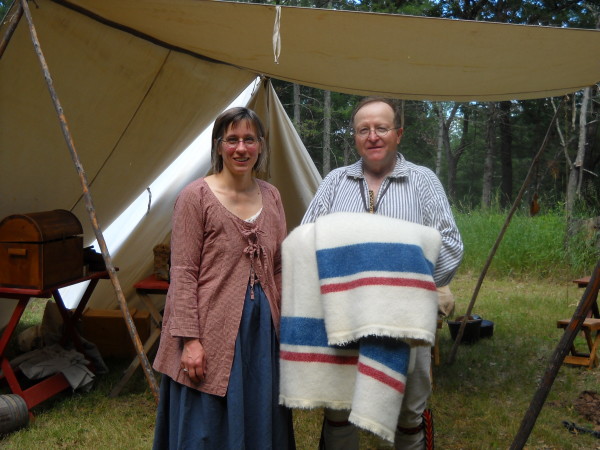
Your creative expression:
- What are your creative challenges? Making a piece, i.e. a blanket with the materials, colors, and patterns common to the 1700 and 1800’s.
- How do you approach your work? With anticipation. It is exciting to plan a piece, watch it develop on the loom, and then wait with much anticipation to see the end result when it comes out of the washing machine. I am never sure what the finished project will exactly be like because of the variation in yarns, weaves, etc. A project looks very different when taken off the loom and finished.
- What is your creative process? I imagine weaving different things, taking inspiration from patterns and colors around me. I weave something and then think, “what if…”
- Does your location, physically or as an idea manifest itself in your work? My husband and I do fur trade reenacting. That does manifest itself in most of my work. And I am drawn to the US colonial period and those traditional weave structures much of the time (but not exclusively).
- What are some of the pleasures you get in your work? Touching fiber, planning how colors and patterns will work together. Seeing someone fall in love with one of my blankets J. Watching the project develop and seeing the final result.
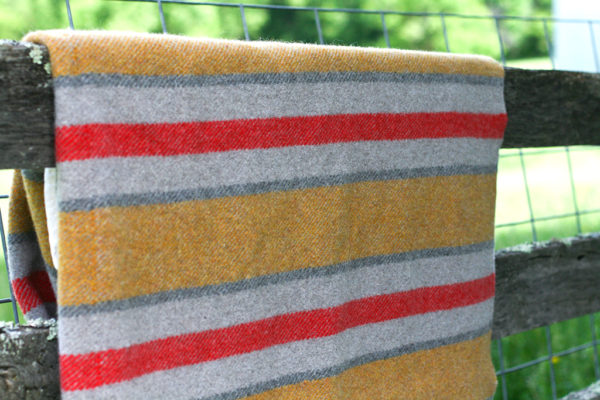
- What are some of the big ideas that influence your work? The examples of weaving from the early colonial period, and seeing what other weavers have accomplished.
- How do you view the artists of today? Gutsy, independent, positive thinkers. Open minded and encouraging to other artists.
- What is your work motto? So much wool, so little time. I want to do more weaving.
Carrie is a member of the Pine to Prairie Fiber Arts Trail and her home studio will be open during the Fiber Arts Weekend April 8 – 10, 2016. She’ll have a looms set up so you can learn more about how she uses historic weave structures, materials and dye to weave blankets inspired by the fur trader era.
Carrie shared some fun fiber facts about Colonial era weaving with us:
- One pattern of colonial weaving that was absorbent and used for linens and diapers was called diaper weave. Yes, even diapers were once handwoven!
- In handwoven wool, “fulled” refers to the wonderful transformation that happens with controlled agitation, hot water, and soap. Nothing to do with eating.
- Reeds for looms are now usually made of stainless steel but they were once made from…reeds. They “beat” or push yarn into place while weaving.
- A warped loom is a very good thing. Instead of not being straight, it means the loom is “dressed” with yarn and ready to start a new project!
- In the 1760s and 1770s, spinning and weaving in the early American colonies became important as an act of patriotism. Some colonists were “thumbing their noses” at England by boycotting imported textiles and producing their own. However, imported textiles did remain important.
- Just as we share favorite recipes, early American weavers shared favorite weaving drafts (patterns) for linens and fabric woven in homes. Of course, weavers still do that now!
